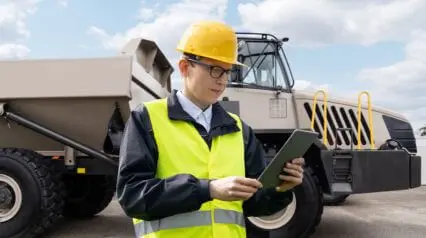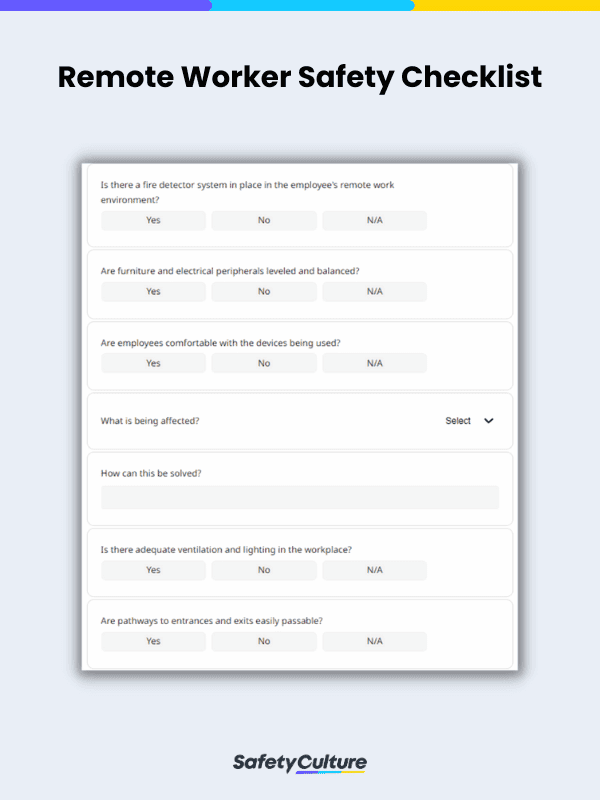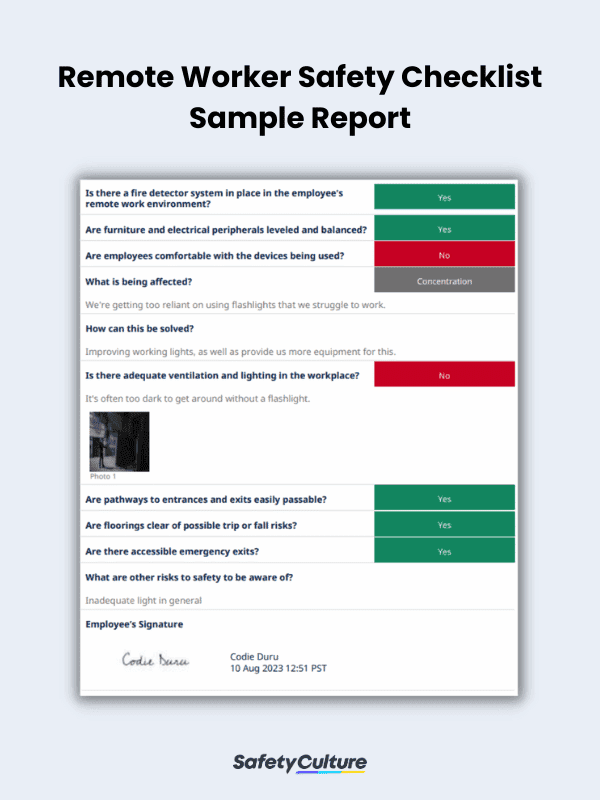What is a Remote Worker Safety Checklist?
A remote worker safety checklist is a document used to manage and monitor the safety of workers away from their head offices or typical workplaces. It helps with ensuring workers in different locations are safe and free from hazards, as well as aware of the necessary safety procedures to do in case of emergency.
Importance
Remote work is defined as any work done away from a workplace’s head office or main work area. It allows workers to work from anywhere depending on their needs and circumstances, and as discussed with their employers. Although remote work has been around for years, it was only after the rise of the Coronavirus pandemic that it became more widespread and common, turning into the norm for many, especially after it has been proven to boost productivity and efficiency for a fraction of the cost.
Often, remote work is associated with the working from home setup. However, remote work can also mean jobs being done elsewhere as well, such as different construction sites, warehouses, and office satellites. For this reason, remote worker safety checklists became a necessity for employers with remote workers, especially since they are often alone or working in smaller groups.
Purpose
The main purpose of a remote worker safety checklist is for employers to ensure the safety of their workers anytime and anywhere. For remote work done at home, safety is still a concern as different circumstances may affect worker environment, such as equipment use and ergonomics. Additionally, according to the UK Health and Safety Executive (HSE), for fields such as construction, manufacturing, hospitality, and the like specifically, remote lone workers especially are more likely to face safety issues such as falls, health issues, fires, explosions, and violence as they do not have enough physical support to help them in case of emergencies.
With a remote worker safety checklist, managers and employers can better secure the safety of their staff regardless of distance, ensuring not only productivity but also a safe working environment even from afar. Using a remote worker safety checklist can also improve or help create remote worker safety plans, which can help streamline operations more efficiently across different departments and tasks. Employees can also use this checklist to report issues with their safety as needed.
What to Include in a Remote Worker Safety Checklist
Different workplaces have different standards for remote working. Some of the things to consider when devising a remote worker safety plan and include in your checklist are:
- Are fire prevention equipment such as alarms and fire extinguishers present?
- Are furniture and electrical peripherals leveled and balanced?
- Are the devices being used hurt employees’ eyes or posture when working? How can this be solved?
- Is there adequate ventilation and lighting in the workplace?
- Is there anything blocking the pathways to entrances and exits?
- Are there any possible trip or fall risks? How are they to be dealt with?
- Are there accessible emergency exits?
- What are other risks to safety to be aware of?
Here is a sample remote worker safety checklist in use for reference:
FAQs about Remote Worker Safety Checklists
A remote worker safety checklist is typically created by employers or managers with help from safety professionals. However, the employees’ feedback is also taken into account, as different industries have different standards for remote working.
Besides using a remote worker safety checklist, you can also support lone workers by doing the following:
- Staying in constant contact with your employees
- Providing safety and security-enhancing equipment to employees
- Using lone working and remote working solutions accessible anytime and anywhere
You can use a remote worker safety checklist for the following situations:
- Ensuring a remote working environment is safe to use and able to support your staff
- Improving remote working conditions based on employee conditions
- Supporting employees with different circumstances




